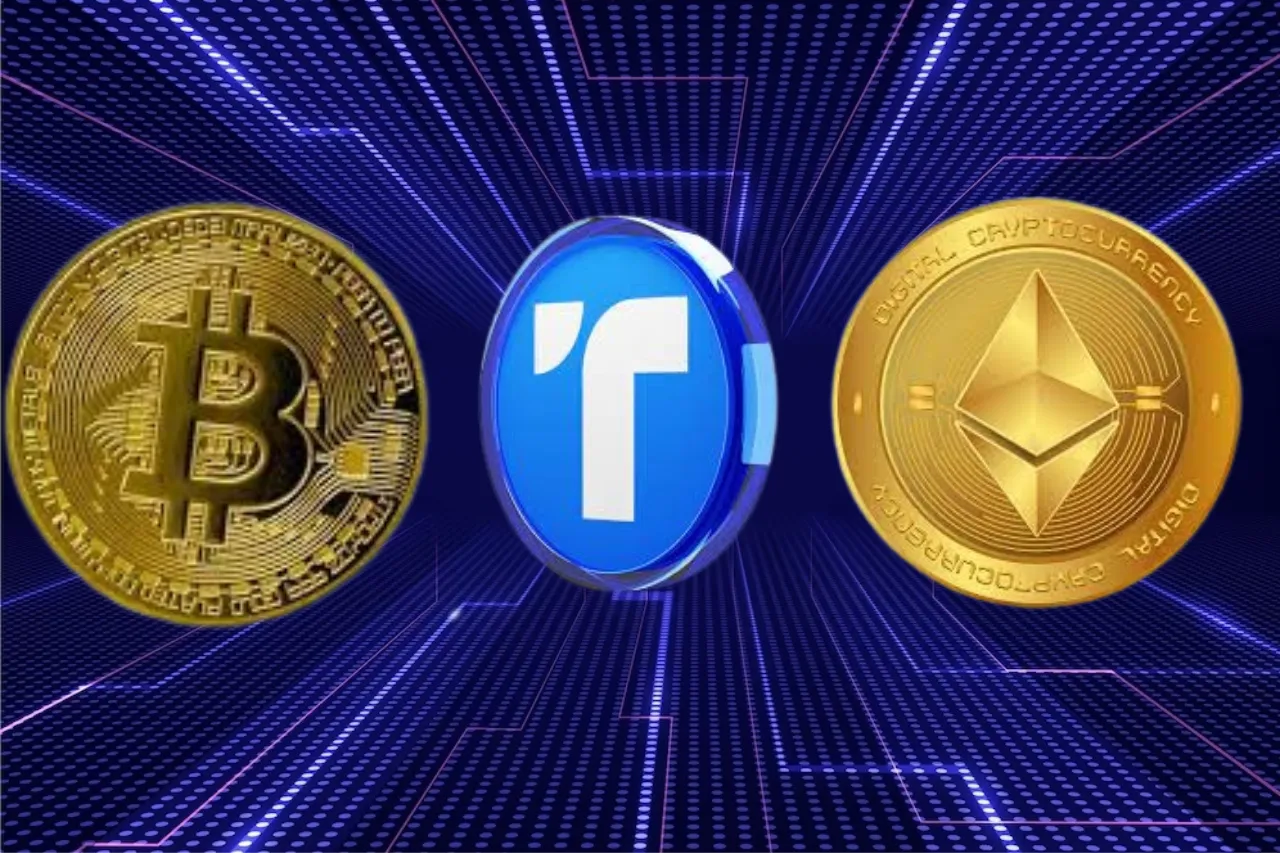In the dynamic world of cryptocurrencies, Bitcoin (BTC), Ethereum (ETH), and Tether (USDT) stand out as leading contenders. Each brings unique features and opportunities to the table, attracting diverse interest from investors and enthusiasts alike. As the original cryptocurrency, Bitcoin’s pioneering technology and widespread adoption have made it a household name, while Ethereum’s smart contract capabilities have opened new avenues in decentralized applications.
Tether, on the other hand, offers a stable alternative, pegged to the US dollar, it’s become a go-to for those seeking to avoid the volatility typically associated with digital currencies. Understanding the differences between BTC, ETH, and USDT is crucial for anyone looking to navigate the complexities of the crypto market. They’ll find that each coin has its own strengths and use cases that make it a valuable part of the broader digital currency ecosystem.
Bitcoin (BTC)
Bitcoin stands as the pioneer of digital currency, introducing a decentralized approach to financial transactions. It operates on a peer-to-peer network, primarily supported by blockchain technology. This revolutionary cryptosystem ensures transactions are secure without central authority intervention.
Distinctly, BTC transactions incur a variable fee, which depends on network congestion. It engenders an environment where users experience complete sovereignty over their finances, a core principle that sets it apart from traditional banking systems.
In contrast to other cryptocurrencies, Bitcoin’s supply cap is set at 21 million coins. This scarcity mirrors precious metals and serves as a counter to inflation.
| Crypto | Bitcoin (BTC) | Ethereum (ETH) | Tether (USDT) |
|---|---|---|---|
| Supply Cap | 21 Million | No Cap | N/A |
| Main Use Case | Value Storage | Smart Contracts | Stablecoin |
| Transaction Fee | Variable | Variable | Fixed |
| Market Capitalization | $1 Trillion | $200 Billion | $68 Billion |
Each cryptocurrency fulfills unique niches within the market, with Bitcoin leading as a digital gold standard.
Ethereum (ETH)
Ethereum, often known as the world’s programmable blockchain, revolutionizes the concept of digital ownership and decentralized applications (DApps). Unlike Bitcoin’s primary function as a digital currency, Ethereum introduces smart contract functionality, allowing developers to build varying applications that operate autonomously on its blockchain.
While Bitcoin serves mainly as a store of value, Ethereum’s utility spans across diverse sectors including finance, healthcare, and the arts through its facilitation of non-fungible tokens (NFTs). Being the second-largest cryptocurrency by market capitalization, Ethereum’s influence in the decentralized finance (DeFi) sector is unparalleled.
Transaction speeds on Ethereum are significantly faster than Bitcoin’s, given its block time of approximately 13-15 seconds, compared to Bitcoin’s 10 minutes. However, this speed comes at the cost of higher transaction fees, famously known as ‘Gas fees’, which vary based on network congestion.
Despite its versatility, Ethereum has faced criticism for its high energy consumption, which has prompted a major network upgrade known as Ethereum 2.0. This update aims to shift the consensus mechanism from proof-of-work to proof-of-stake, striving to drastically reduce the network’s energy use and increase transaction throughput.
Tether (USDT)
Staking its claim as a stablecoin, Tether (USDT) operates with a consistent value pegged to the US dollar. Its core function lies in minimizing volatility typical of cryptocurrencies like Bitcoin and Ethereum.
Unlike the counterparts, Tether’s steadfast value makes it a go-to for market stability. Transactions with USDT tend to avoid sudden price swings, encouraging its use for trading and remittance.
With a firm place in the cryptocurrency hierarchy, Tether’s liquidity and widespread integration sets it apart. It offers a bridge between traditional finance and the cryptocurrency ecosystem.
Ethereum and Bitcoin revolutionize sectors through technology and potential growth. USDT, on the other hand, provides predictable transactional utility, impacting forex operations and digital asset exchanges.
| Feature | Bitcoin (BTC) | Ethereum (ETH) | Tether (USDT) |
|---|---|---|---|
| Market Cap | $1 Trillion | $400 Billion | $68 Billion |
| Primary Function | Digital Currency | Programmable Blockchain | Price-Stable Currency |
| Transaction Time | 10 minutes | 15 seconds | Instant |
| Transaction Fee | $5 – $50 | $10 – $20 | <$1 |
| Use Cases | Store of Value | Smart Contracts | Trading Pair |
| Energy Consumption | High | High pre-Ethereum 2.0 | Low |
| Network | Proof of Work | Proof of Stake (soon) | N/A |
Emerging as a buffer against volatility, Tether’s role as a reliable medium for transactions is clear. Its influence stretches from individual traders to massive exchanges, solidifying its presence in the financial landscape.
Key Differences Between BTC, ETH, and USDT
Bitcoin and Ethereum are primarily decentralized digital currencies, while Tether is a stablecoin. The former offers an open-source, peer-to-peer network and the latter maintains a 1:1 value ratio with the US dollar.
Transaction Time and Fees
| Cryptocurrency | Average Transaction Time | Average Transaction Fee |
|---|---|---|
| BTC | 10 minutes | $1.78 |
| ETH | 15 seconds to 5 minutes | $2.54 |
| USDT | Seconds to minutes | $1.00^ |
^Fee can vary greatly depending on the network used.
| Cryptocurrency | Market Cap (in billions) |
|---|---|
| BTC | $420^ |
| ETH | $160 |
| USDT | $68 |
^Values are approximate and subject to market fluctuations.
The difference in market cap reflects the dominance of BTC in the marketplace, ETH’s strong platform capabilities, and USDT’s utility in stabilizing trades.
Use Cases and Applications
Bitcoin’s primary use case is as a digital currency for peer-to-peer transactions without the need for traditional banking systems. It’s often considered a store of value, akin to digital gold. Investment and speculative trading are common applications, driving the price movements and market interest.
Ethereum, while also used for transactions, mainly serves as a platform for smart contracts and decentralized applications (DApps). It’s the backbone of the burgeoning decentralized finance (DeFi) sector and non-fungible tokens (NFTs), reshaping digital ownership and investment strategies.
Tether’s use cases revolve around its stability. As a stablecoin, it provides a hedge against the volatility typically associated with cryptocurrencies. This makes it ideal for traders and investors looking for quick currency exchanges without the risk of fluctuating prices.
| Feature | Bitcoin (BTC) | Ethereum (ETH) | Tether (USDT) |
|---|---|---|---|
| Primary Use | Digital Currency, Store of Value | Smart Contracts, DApps | Stable Digital Currency |
| Application | Transactions, Investment | DeFi, NFTs | Trading, Hedging Volatility |
Investment strategies often include BTC or ETH due to their potential for growth, while USDT is more for maintaining value during trading operations. Each cryptocurrency serves its purpose, and savvy users navigate between them to optimize their digital assets’ performance and security.
Conclusion
Choosing between Bitcoin, Ethereum, and Tether depends on individual investment goals and risk tolerance. Bitcoin’s reputation as digital gold makes it a compelling choice for those looking to preserve wealth over time. Ethereum’s innovative smart contract technology, however, offers a dynamic ecosystem for those interested in the expansive possibilities of DeFi and NFTs. For investors seeking stability in the often turbulent crypto markets, Tether provides a safe harbor with its peg to the US dollar. Ultimately, a balanced crypto portfolio might well include a mix of these assets, leveraging the unique strengths and applications of each to achieve a diversified investment strategy.
Frequently Asked Questions
What is the primary use of Bitcoin (BTC)?
Bitcoin is mainly used as a digital currency for conducting peer-to-peer transactions and is also widely regarded as a store of value, much like gold in the digital realm.
How does Ethereum (ETH) differ from Bitcoin?
Ethereum differs from Bitcoin in that it’s not just a digital currency. It’s also a platform for running smart contracts and decentralized applications (DApps), particularly important for the DeFi sector and NFTs.
What is the main advantage of Tether (USDT)?
The main advantage of Tether (USDT) is its stability; as a stablecoin, it’s pegged to fiat currencies like the US dollar, making it a popular choice for crypto traders and investors to mitigate volatility risks.
For what reasons might someone invest in BTC or ETH?
Individuals might invest in BTC or ETH primarily for their growth potential. BTC is considered a store of value, while ETH is integral to the emerging DeFi and NFT markets, which have significant growth prospects.
How is USDT used in investment strategies?
USDT is often used in investment strategies as a means to preserve capital during trading operations. Its stable value makes it a safe haven for investors to park their funds when the cryptocurrency market is volatile.


